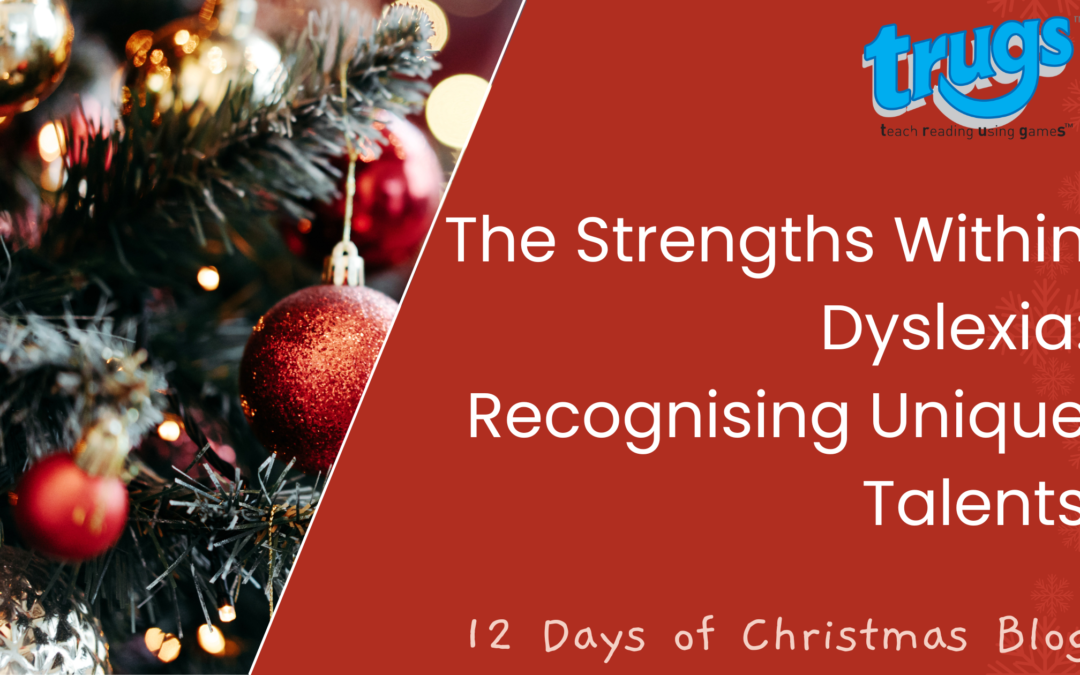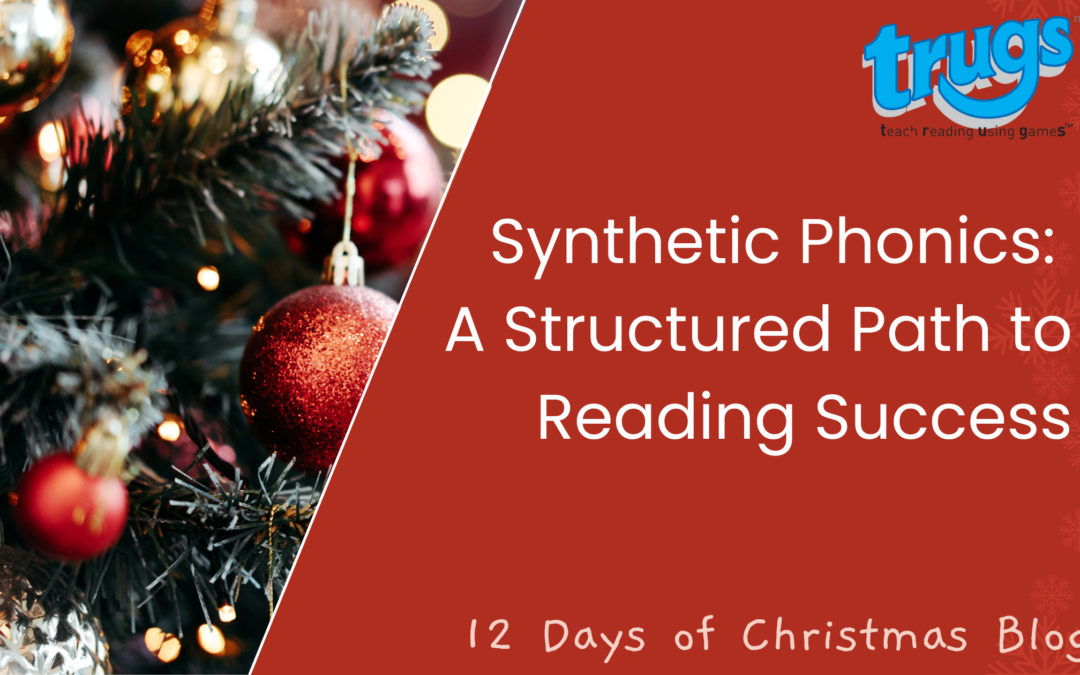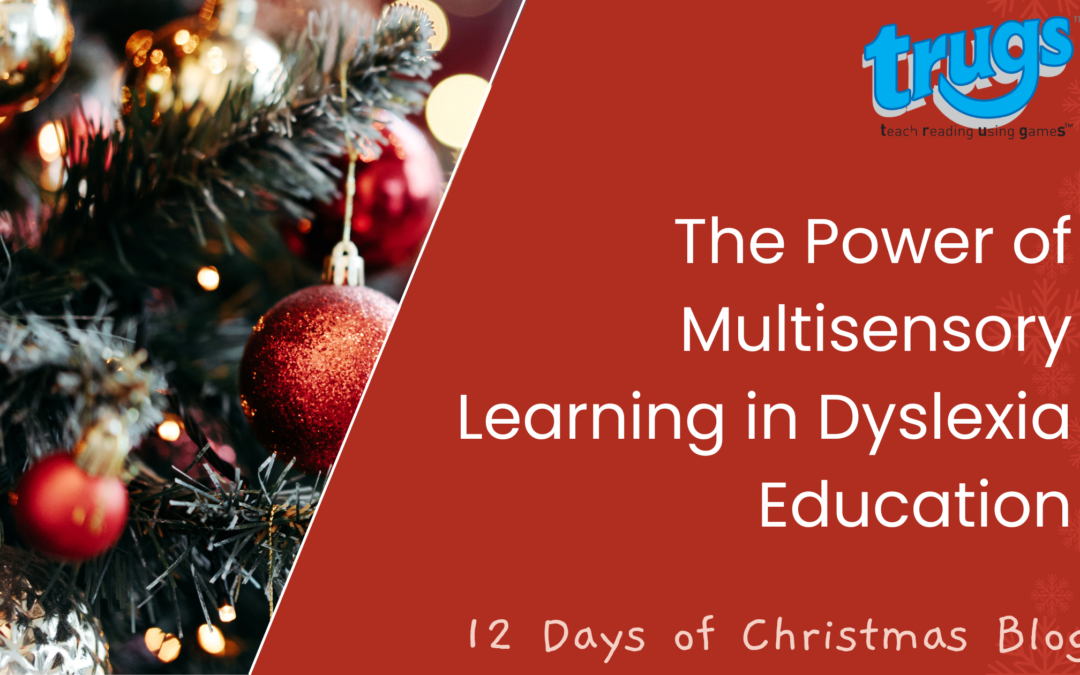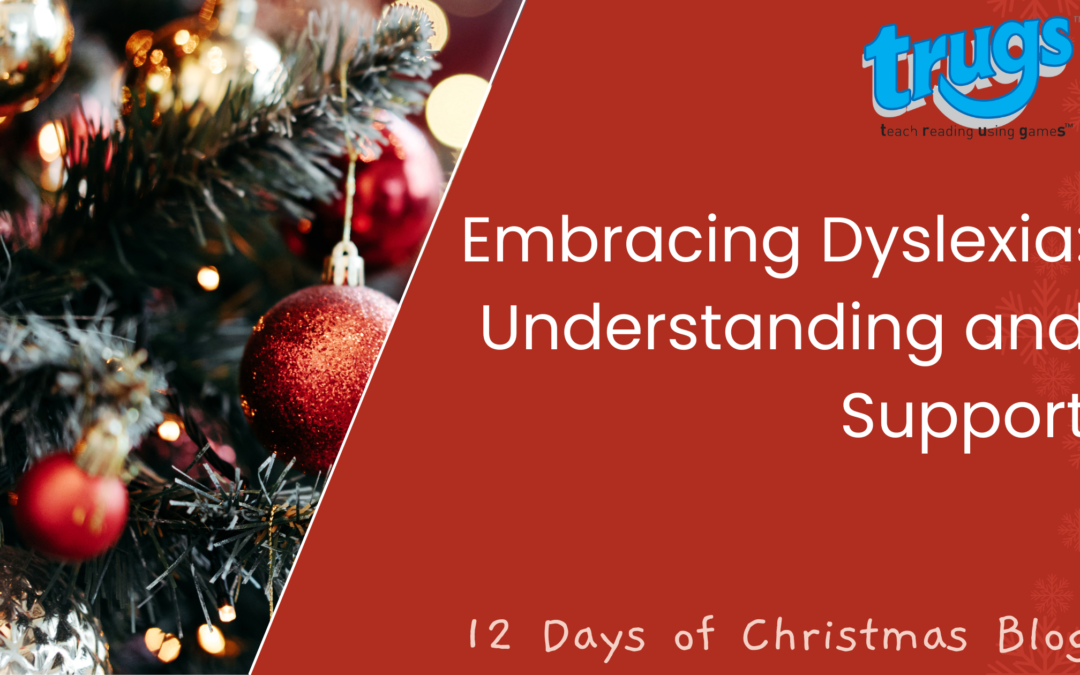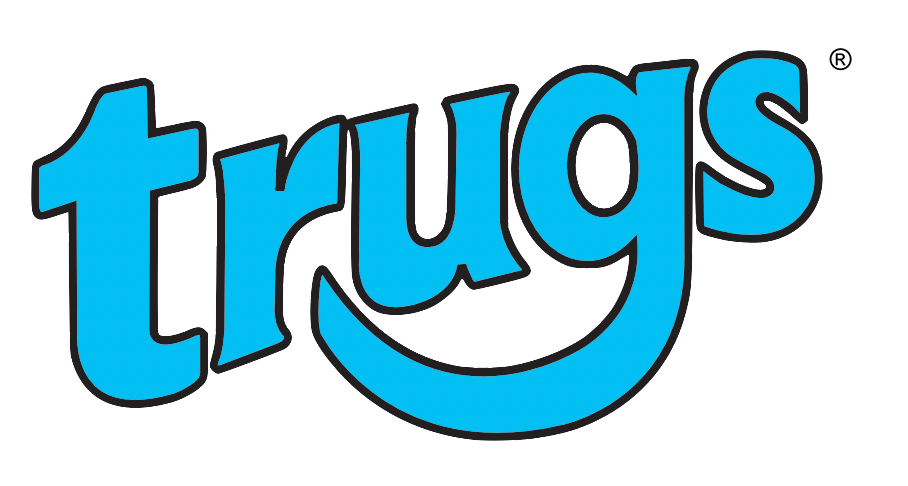
by Lucy Smith | Dec 5, 2023 | 12 Days of Christmas
Trugs, or “Teach Reading Using Games,” is an innovative approach to improve reading skills in children, especially those with dyslexia. These card games make learning to read fun and interactive, offering a welcome break from traditional learning methods....

by Lucy Smith | Dec 4, 2023 | 12 Days of Christmas
Dyslexia, often perceived as a learning difficulty, also comes with a unique set of strengths. Individuals with dyslexia commonly exhibit creative thinking, problem-solving skills, and a distinct ability to think outside the box. Many dyslexic individuals are highly...

by Lucy Smith | Dec 4, 2023 | 12 Days of Christmas
Synthetic phonics is a method that teaches reading by first teaching the sounds of letters and letter groups, then blending these sounds to form words. This structured approach is particularly beneficial for children with dyslexia, as it simplifies the complex English...

by Lucy Smith | Dec 1, 2023 | 12 Days of Christmas
Multisensory learning, an approach that engages multiple senses, is particularly effective in dyslexia education. It integrates visual, auditory, kinaesthetic, and tactile elements, making learning more engaging and effective for children with dyslexia. Visual aids...

by Lucy Smith | Dec 1, 2023 | 12 Days of Christmas
Dyslexia, often misunderstood, is more than a mere reading difficulty. It’s a different way of processing language, offering both challenges and unique perspectives. Embracing dyslexia begins with understanding: it affects reading, writing, and spelling, but...


